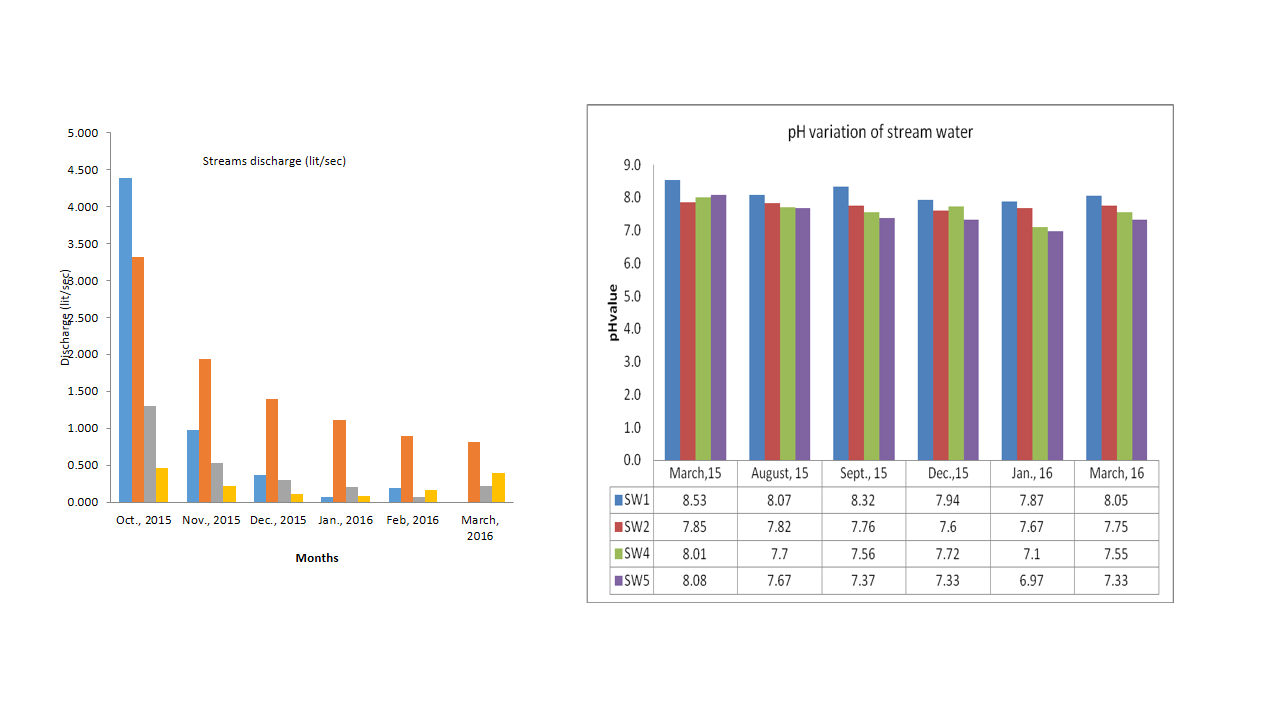
The present study was carried out to understand the hydrological behavior of natural springs/streams in Semalta watershed, Kalsi block, Dehradun. The surface catchment areas of springs/streams were delineated using Survey of India Toposheet (1:50,000 scale) whereas drainage, slope, and land use maps of the watershed were prepared using open source ILWIS GIS software. The drainage map of the watershed indicated the ephemeral, intermittent and perennial nature of streams and the slope map of the watershed indicated that the majority of the area falls under scrubland. The discharge trend at different gauging sites from October 2015 to March 2016 indicated that the flow rate of the stream gradually decreased from post-monsoon to pre-monsoon period. The geohydrological and geomorphological study indicated that most of the springs/streamflow were controlled by fracture/joints with slate/phyllite/limestone/quartzite as country rock. The pH of most of the stream water was mildly alkaline (7.85-8.82) whereas EC was non-saline (0.087-0.425) and temperature varied from 14-23°C. Results on major ions indicated that a higher percentage of NH4+ together with NO3- was possible because of anthropogenic influence. In addition, the higher percentage of SO4- and F- was due to lithological pyrite whereas the higher percentage of HCO3- was due to pyrite weathering of slate. Results on the isotopic variation of δ18O showed that samples were collected with a total height difference of 700 m with a variation of -0.21‰ per 100 m for stream water and -0.5‰ for rainwater. On higher altitudes mainly narrow subsurface pathways are found and therefore only small size of structures are required for recharging and vice versa for the recharge of springs located in lower altitudes. The present study discusses various sampling techniques to ascertain the altitude of recharge of springs which would form the basis for taking appropriate on field activities for spring/stream rejuvenation.
Total file downloads: 4